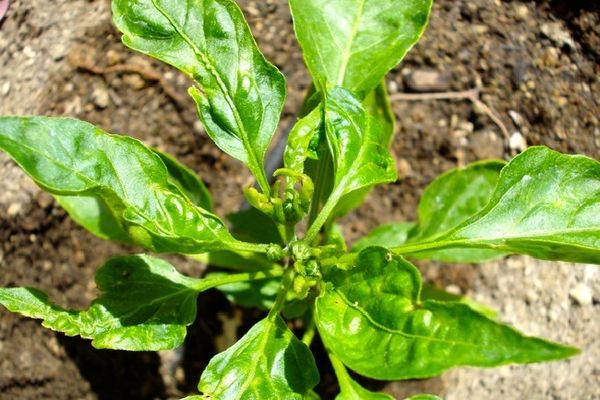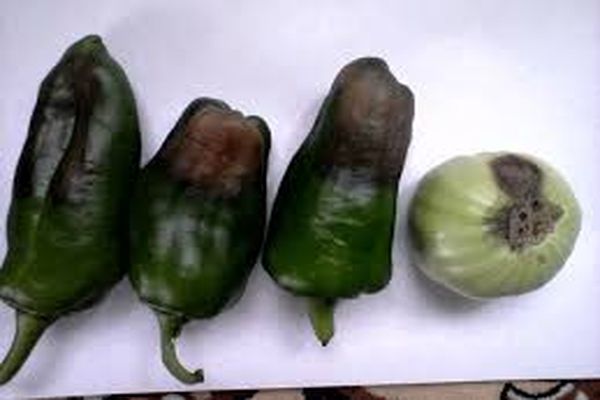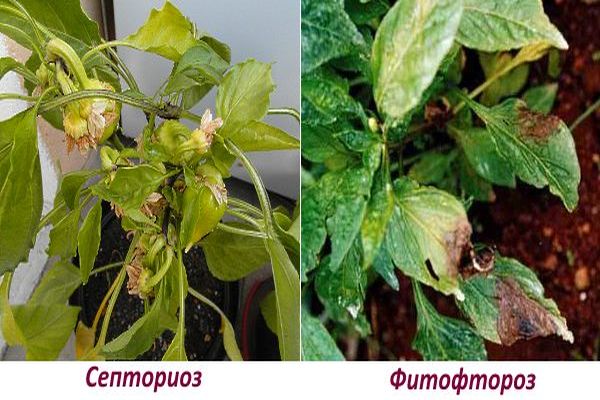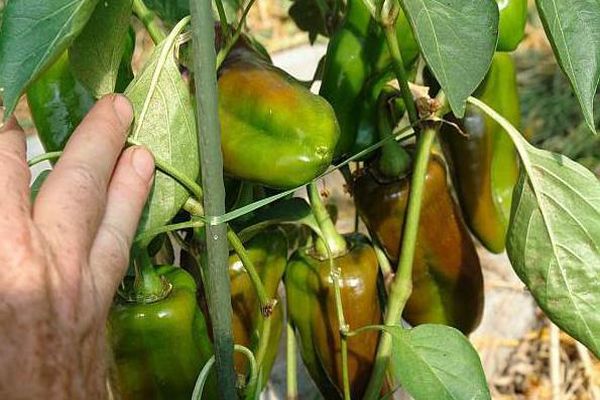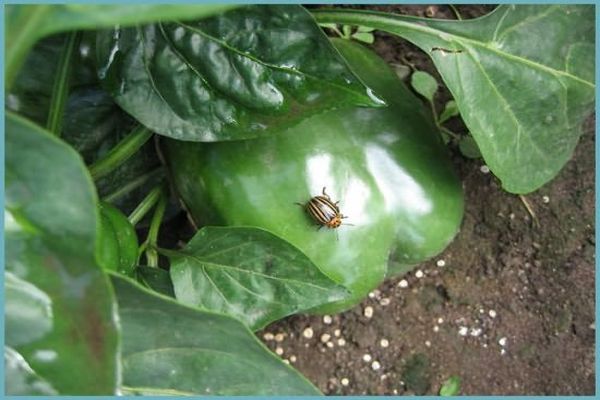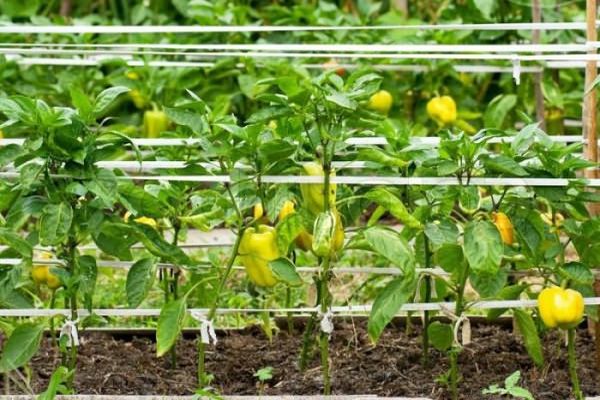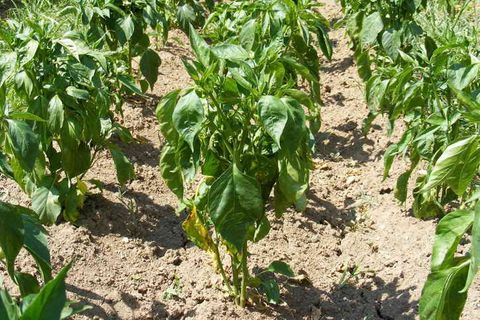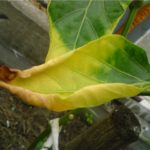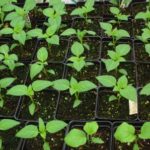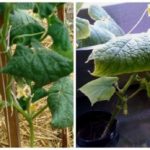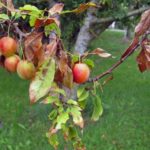Bell pepper diseases can be recognized by the appearance of the plant. Therefore, knowing the initial signs, you can choose the right control measures to save the entire crop.
Bacterial diseases
In greenhouse conditions, the climate is favorable for the development of many pathogens. The infection spreads at a faster rate than in open beds. Therefore, you need to follow the recommendations in order to prevent this or that disease. If the disease of peppers in a greenhouse is recognized early, then their treatment will be carried out correctly.
Phytoplasmosis (stolbur) of bell pepper is provoked by mycoplasmas. Infection occurs due to aphids, mites and other pests.
The plant does not grow to the stated size; the bush is small. The upper leaves begin to suffer. Their edges bend upward, curl and gradually dry out. If you do not start fighting, the dry leaves turn yellow, fall off and the plant dies. During pepper stolbur, the fruits are small, deformed in shape, and turn red early. The pepper tastes bitter and not juicy.
The main preventive measures that will help against diseases include:
- preventative treatment against pests;
- it is best to choose hybrids, they are more resistant to all diseases;
- if diseased bushes appear, they need to be uprooted and taken away from the beds;
- It is imperative to disinfect the supporting structures of the greenhouse, garden tools and the soil itself;
- tops cannot be left on the site after harvesting;
- carry out weeding to prevent weeds from growing.
Verticillium wilt of pepper is caused by bacteria. With this disease, the leaves first turn pale, become rough and hard. The fruits are small, the shape is deformed, and there are very few seeds inside.
If the disease affects a variety that is resistant to this disease, then the spread occurs slowly, and the fruits have time to ripen.
Verticillium has no cure. You can only protect yourself if you carefully cultivate the planting material and soil.
Why do pepper leaves turn black? Common diseases of pepper seedlings are complemented by a disease such as bacterial black spot. The cause of the disease is bacteria that persist on the seeds. Therefore, it is so important to carry out a disinfection procedure before planting seedlings. Hot weather and high humidity contribute to the massive spread of bacteria.
Dark brown spots appear on the leaves.As the disease spreads, the spots on the pepper leaves turn black and increase in size, but do not merge. Due to malnutrition, the leaves begin to dry out and the fruits do not ripen.
To protect against the disease, you should choose varieties that are resistant to this disease. How to treat vegetables? The fight against microorganisms can be accompanied by drugs such as Trisodium phosphate, Fitosporin, Planriz.
Viral nature
Bronzing of peppers (spotted wilt) is caused by viruses. A distinctive symptom of the disease is the gray-violet or bronze color of the leaves. As the infection spreads, brown spots or streaks form on the leaves, first at the base and then moving to the tips.
Fruits are also affected by spotted wilt. The peppers develop brown, yellowish, or green rings and dark stripes at the base.
What to do to prevent peppers from becoming bronzed? A number of preventive measures need to be taken:
- Before planting, be sure to disinfect the seeds;
- You can’t plant peppers next to a flower bed;
- get rid of weeds in a timely manner;
- emerging diseased leaves need to be disposed of; they are cut off and burned;
- Advice from experienced gardeners: “Fight the disease with Fundazol.”
A serious tobacco mosaic disease can destroy the entire crop or significantly reduce its quantity. The causative agent is a virus. On the plant you can see leaves with a marble pattern. Yellow, dark and light green inclusions alternate. The leaves curl, development stops, the fruits are small and do not ripen. Brown spots can be seen on the peppers.
How to fight the virus? To prevent a mosaic of peppers, you need to treat the seeds before planting and do not plant them in the same area for several years in a row.Among folk remedies, a solution of whey and iodine is effective.
Another disease that affects peppers is pepper blossom end rot. It develops when the plant cannot provide the fruit with calcium.
A factor in the development of the disease is not only calcium deficiency, but also the presence of viruses, bacteria or fungi on the surface of the fruit.
First, dark green spots appear at the base of the fruit, which over time acquire a brown tint. The damaged area wrinkles and becomes dry.
As a preventive measure, measures such as maintaining humidity in the greenhouse, loosening and weeding the soil, and regular watering help. It is recommended to carry out mulching. It is useful to carry out root feeding, for example, with calcium nitrate at least three times during the entire growing season.
Fungal attack
A fungal disease such as late blight can cause significant damage to the crop. Spores can become airborne and remain in the soil for a long time.
First of all, the leaves get sick. Brown spots appear on them, initially small in size. They increase at high speed and spread throughout the entire plant, including the fruits. A light gray coating can be discerned on the surface of the spots.
In dry weather, the leaves curl and dry out. If the weather is rainy, then black spots develop on the leaves and rot cannot be avoided.
Preparations that can stop the spread of fungus in peppers and prevent infection of all seedlings: Alirin B, Gamair, Oksikhom, Ordan, Fitosporin M, Quadris.
If the lower part of the pepper's stem has darkened, the cause may be a fungal disease such as blackleg. The infection most often affects seedlings, but adult plants can also become ill.The pathogen enters the plant through the soil or along with infected seeds. Distribution factors include too frequent planting of seedlings or a poorly ventilated greenhouse. The place begins to dry out and rot, after which the entire seedling dies.
The pathogen can be combated in the following ways:
- Plants should be inspected daily;
- when the disease is first detected, it is recommended to make a solution of potassium permanganate and water the soil with it;
- Before planting seedlings, the soil must be disinfected; preparations such as Baikal and Siyanie are suitable;
- It is recommended to treat seeds with drugs that increase immunity: Epin, Agat;
- It is imperative to follow the watering regime;
- The room must be ventilated, avoiding drafts.
The appearance of Fusarium wilt of peppers also occurs due to fungi. The spores clog the vessels inside the stem, and the plant stops receiving nutrition and moisture. The leaves of the seedlings turn yellow and curl. Fusarium wilt of pepper cannot be treated. If a diseased sprout is discovered, it must be destroyed immediately.
Prevention consists of the following actions:
- choose pepper varieties that are resistant to fusarium;
- the seeds must be treated with special preparations, for example, foundationol;
- After harvesting, remove old tops.
In a greenhouse, bell peppers often suffer from cladosporiosis; it can be suspected when the leaves have darkened.
The fungus is active especially where there is high humidity. Brown spots develop on the outside of pepper leaves. On the inside you can see a gray coating.
How to treat cladosporiosis and main preventive measures:
- in the fall, after harvesting, it is imperative to disinfect with copper sulfate;
- choose a different place for planting peppers every year;
- when a disease appears, it is recommended to reduce watering and air humidity in the greenhouse;
- you can cure the plant with drugs such as Barrier, Barrier.
Gray rot is caused by fungi. It may occur due to high air humidity. First, brown dots appear on the lower part of the stem. Then black spots may appear on all parts of the plant. As the infection progresses, the entire plant becomes covered in mold.
Control measures to prevent fungal diseases of pepper and their treatment:
- maintaining distance during boarding;
- maintaining normal temperature and humidity;
- in reviews it is often found: “Treatment with Fitosporin, Fundazol or Previkur helps to get rid of the disease. We even treat the beds for preventive purposes.”
Due to frequent rains and high humidity, sweet peppers are affected by streptoria. White spots appear on pepper leaves, which can be of different sizes. E
If you don’t start fighting, the leaves turn white, wrinkle, dry out and fall off. The first signs are observed first on the lower leaves, and the top gradually begins to lighten.
The fungus often attacks a weakened plant, so you need to monitor fertilizing, lighting and soil moisture. A sick plant must be removed from the garden immediately. It is recommended to treat the remaining seedlings with preparations containing copper.
Greenhouses can become a breeding ground for rust fungus. A rusty coating forms on the leaves. In case of severe infection, the plant dies.
When growing pepper seedlings at home, you can also encounter the diseases listed above. Very often, pathogens infect young, immature vegetation. That’s why it’s so important to start doing prevention at this stage.

